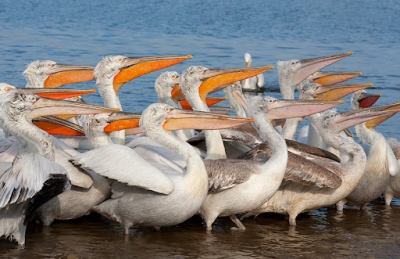
Located almost on the edge of Bulgaria in Europe, the Srebarna Nature Reserve is a freshwater lake and wetland, just a couple of km south of the famous Danube River. Spread across more than 600 hectares, the wetland falls on the route of birds migrating from Europe to Africa. It is said to be the breeding ground for nearly 100 species of birds, including some rare and endangered ones. In addition, it is a temporary habitat for over 75 species that migrate. The floating reed islands (called “kochki” locally) and flooded willow woodlands in the Reserve are important areas for birds to breed. This UNESCO World Heritage Site was placed on the danger list in 1992, due to loss of water and pollution in the lake, resulting in the disappearance of many bird species. However, upstream activities such as housing and farming were halted, bringing about positive changes in the region. Eventually, in 2003, the Reserve was removed from the danger list. The region is also protected as a Wetland of International Importance under the Ramsar Convention and designated as an Important Bird Area by BirdLife International.
Wildlife
The Srebarna Nature Reserve is said to host the only colony of Dalmatian pelicans in the country. It is also believed to be home to the largest breeding populations of four more globally threatened bird species, namely pygmy cormorant, ferruginous duck, white-tailed eagle, and corncrake. Among others birds that can be spotted in the region are night heron, purple heron, glossy ibis, white spoonbill, little bittern, squacco heron, little egret, great white egret, and ruddy shelduck. Three species of terns can also be found here. The globally threatened red-breasted goose winters in the reserve. The wintering populations of whitefronted goose, greylag goose, and fieldfare are considered notable. The lake and the areas around it also support more than 20 species of reptile and amphibian species, and 40 mammal species.
Good conservation status, but…
While globally a lot of natural wildlife habitats face several threats-both natural and human-made, Srebarna is one of those rare spaces that enjoys a good conservation status, “with some concerns”, according to the International Union for Conservation of Nature (IUCN). According to IUCN’s 2020 Conservation Outlook, there “is an overall trend of improvement of the conservation status of most of the bird populations”. Given that the region is very important for birds, it is heartening that the population of some species has increased since it was removed from the danger list.
However, the place is not without concerns. For instance, the conservation status of species such as squacco heron and black tern has deteriorated. Also, “additional information is needed to make reliable assessments of the conservation state” of a few other species. Other concerns, including hydrological management, may not be a severe threat right now, but it is felt that with issues such as climate change looming large, these could affect Srebarna in the future.
Climate change is likely to decrease the water level of the Danube, resulting in the disruption of seasonal flooding in Srebarna. This has the potential to change the quality and quantity of nutrients, sediments, etc. in the region, and lead to a drastic ecological change, affecting both the flora and fauna there.
Picture Credit : Google



